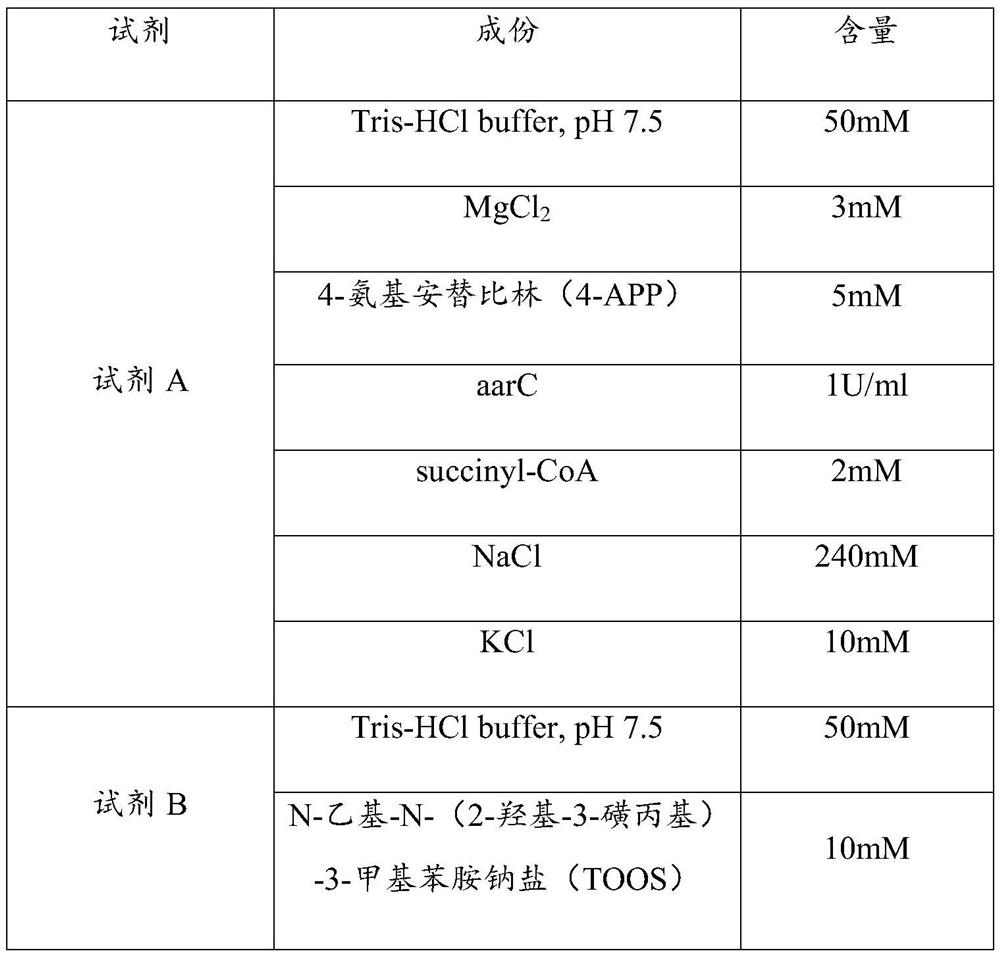Method for detecting acetate content based on enzyme-linked color development method and application thereof
An enzyme-linked color development and acetate technology, which is used in measurement devices, analysis by chemical reaction of materials, and material analysis by observing the impact on chemical indicators, can solve the problem of high price of ion chromatograph and other equipment. Difficulty in large-scale promotion and use
- Summary
- Abstract
- Description
- Claims
- Application Information
AI Technical Summary
Problems solved by technology
Method used
Image
Examples
Embodiment 1
[0059] Preparation of succinate-CoA:acetate-CoA-transferase (succinyl-CoA:acetate CoA-transferase, aarC):
[0060] 1. Full-length cloning of aarC gene
[0061] The coding region sequence (Accession No. D13291) of the aarC gene of Acetobacter aceti was obtained from NCBI, and a pair of gene-specific primers (aarC F, aarC R) were designed. After the genomic DNA of Acetobacter is extracted, the full-length sequence of the gene is amplified by polymerase chain reaction (Polymerase Chain Reaction, PCR).
[0062] The PCR reaction system was as follows: primers (10 μmol L -1 ) each was 3 μL, 2x Besttaq Master Mix (Applied Biological Materials Inc.) was 25 μL, cDNA was 0.3 μL, ddH 2 O is 18.7 μL. The PCR program is: 94°C for 3min; 94°C for 10s, 56°C for 45s, 72°C for 1min, 10 cycles; 94°C for 10s, 53°C for 45s, 72°C for 1min, 10 cycles; 94°C for 10s, 49°C for 45s, 72°C 1min, 15 cycles; 10min at 72°C. The PCR products were detected by 1% agarose gel electrophoresis to determine wh...
PUM
 Login to View More
Login to View More Abstract
Description
Claims
Application Information
 Login to View More
Login to View More - R&D
- Intellectual Property
- Life Sciences
- Materials
- Tech Scout
- Unparalleled Data Quality
- Higher Quality Content
- 60% Fewer Hallucinations
Browse by: Latest US Patents, China's latest patents, Technical Efficacy Thesaurus, Application Domain, Technology Topic, Popular Technical Reports.
© 2025 PatSnap. All rights reserved.Legal|Privacy policy|Modern Slavery Act Transparency Statement|Sitemap|About US| Contact US: help@patsnap.com



